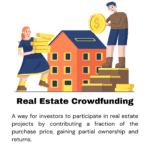1. Why Airbnb Continues to Attract U.S. Hosts
Many Americans see Airbnb not just as a chance for extra pocket money but as a reliable passive-income stream. With over 2.25 million U.S. listings, hosts nationally averaged $14,000 per year (~$1,167/month) in 2024 Some hosts in top markets earn well north of that—earning $4,300/month (~$51,600/year) between late 2023 and 2024 .
These income figures, combined with flexible pricing and guest demand, make Airbnb a popular alternative to traditional long-term rentals.
2. National & Regional Income Breakdown
- Average host earnings in 2021–22:
- Nationwide: $44,235/year, per Tipalti—though this is gross, before expenses
- By state (2021): Hawaii leads at $73,247, Tennessee $67,510, Arizona $60,448
- By city:
- San Diego hosts averaged $77,990/year, Austin $74,241, Kissimmee (FL) $70,539
- Monthly averages:
- A survey in early 2025 found average U.S. hosts earned $924/month, median $440/month—with 75% earning less than $1,000 and only 10% eclipsing $2,000/month
This illustrates a wide earnings spectrum—from modest supplemental income to serious revenue for premium listings.
3. Dynamics Behind Monthly Airbnb Income
📌 Property Type & Location
- Urban two-bedroom rentals: Generate $3,200–$4,200/month
- Spare rooms or private rooms: Can cover most rent with ~20–24 rented nights/month in cities like Miami or Philadelphia
📌 Seasonality & Demand
- Peak seasons (summer, festivals) boost rent and occupancy significantly.
- Countries with high tourism and business travel (Hawaii, San Diego, Austin, Kissimmee) see consistently higher host earnings
📌 Amenities & Experience
- Guests favor listings with fast Wi‑Fi, workspaces, eco‑friendly features, and professional photos These boost nightly rates by up to 20%, and occupancy by 15% .
📌 Pricing Tools & Strategies
- Hosts use dynamic pricing tools like PriceLabs or BeyondPricing to match supply/demand cycles
- Average nightly rate in 2025 is $137, up 5% y/y
4. Expenses vs. Net Income
Gross earnings don’t equal profit. Hosts deduct:
- Utilities, cleaning, maintenance, taxes, insurance.
- Airbnb’s ~3% host fee, platform commissions, and service charges
- Property management fees (20–25% of income) or self-management costs .
For example, one Reddit host reports $28–30k revenue/year, nets $16–18k after expenses
Another runs two rural listings grossing $6,000/month but nets only around $3,100/month after expenses
5. Superhosts & Experience Counts
- Superhosts earn ~22–64% more than average listing hosts
- Quality matters: an NLP study showed that positive review sentiment significantly boosts acceptance rates, even more than sheer volume
🗣️ Reddit voices:
“I make about 28–30 k. … After … supplies, misc … I make about 16–18 k.”
“My rural 3,000 sq ft home brings in about $6 K/month gross, $3,100/month net … Airbnb pays all the bills … a few hundred bucks pure profit”
6. Regulatory & Market Pressures
Local STR rules vary widely:
- Cities like NYC, San Francisco, and Miami impose licensing or day caps
- Hosts adapting include offering 30-day minimum stays, common for digital nomads or businessers
Booking managers expect 66% of rentals to grow revenue in 2025, but regulations in Florida, California, Colorado, and Massachusetts complicate hosting
7. Enhancements & Income-Boosting Tactics
✅ Amenities & Guest Experience
- Smart home features, workspace, eco-friendly setups, pet-friendliness.
- Professional photography increases bookings and rates
✅ Tools & Automation
- AI-driven messaging, pricing, check-in/out, cleaning coordination
✅ Add-On Services
- Offering extras: early check-in, pet fees, airport rides, curated tours
✅ Smart Pricing & Yield Management
- Hosts using dynamic pricing outperform those using static rates.
- Setting weekend or event premiums around festivals (SXSW, sporting events) can lead to $1,000+/night during peaks
8. Passive vs. Active: The Work-Income Balance
Although Airbnb income is labeled “passive,” reality varies:
- Many hosts work full-time managing guest messages, turnover, and upkeep
- Managers often outsource listing, cleaning, maintenance, and guest communications—usually costing 20–25% of gross income
It’s a business that rewards investment in systems and service.
9. Building Passive Income Over Time
🎯 Entry Strategies
- Spare-room hosting is low-risk and requires minimal investment.
- City apartments can earn $3–4k/month but are costlier to enter.
- Dedicated STR properties in tourist zones can generate $5k+/month gross.
💡 Scaling Up
- Reinvest earnings in additional properties.
- Add management staff or outsource tasks.
- Build a portfolio across cities or target different guest niches (digital nomads, families).
🚀 Example Approach
- Start with a spare bedroom listing in a mid-tier city (~$1k/month).
- Use AI tools & quality images to boost occupancy and rates.
- Save earnings to buy a dedicated rental in a high-demand zone.
- Outsource operations and scale to 2–3 units—to target $5–10k/month before expenses.
10. The Outlook for 2025 and Beyond
- Demand remains strong: AI and automation are improving earnings and operations
- Regulations are increasing, but professional operators adapt successfully.
- Market saturation is creating competition—quality and service matter more than ever
- Professionalization is rising: hosts become small-scale operators—some even securing SBA support during crises .
✅ Final Thoughts: Is Airbnb Passive Income Possible?
Yes—but it’s often semi-passive.
Listing a room or property can yield $1k–$4k/month, depending on type and location. True passive income requires thoughtful automation, solid management systems, and guest experience focus.
If you’re considering Airbnb hosting:
- Analyze market demand, regulatory environment, and legal compliance.
- Budget carefully—account for fees, management costs, maintenance, and licensing.
- Invest in photography, amenities, and automation to stand out.
- Decide whether to self-manage or grow into a small operation.


